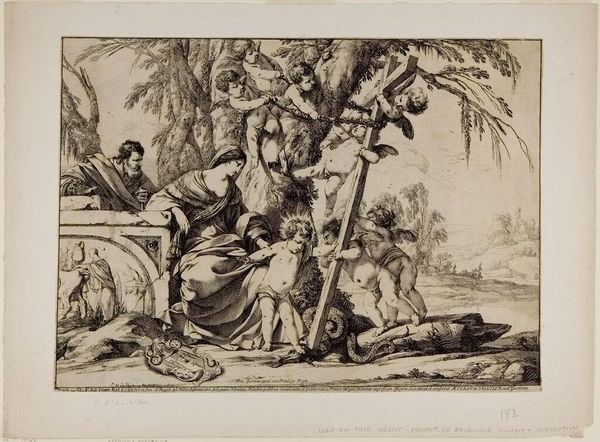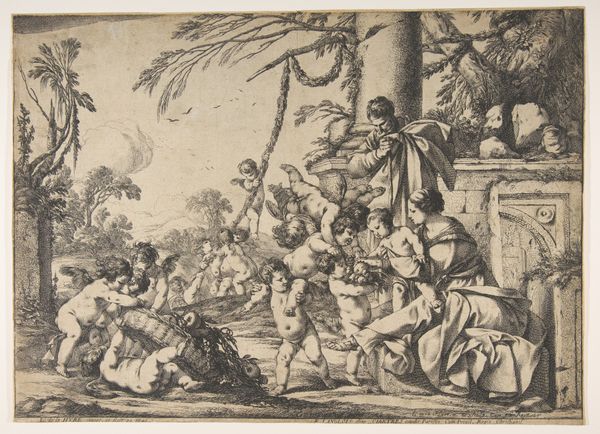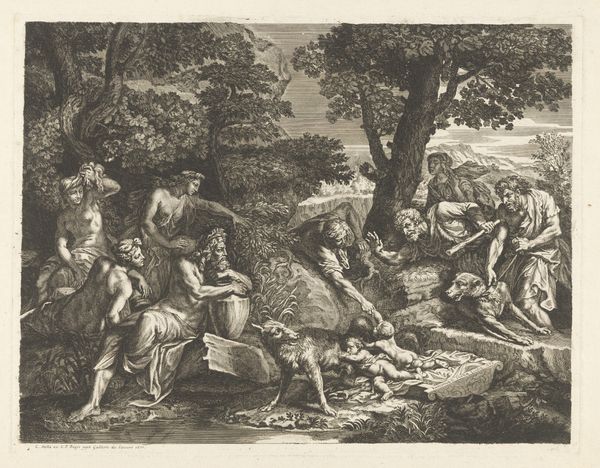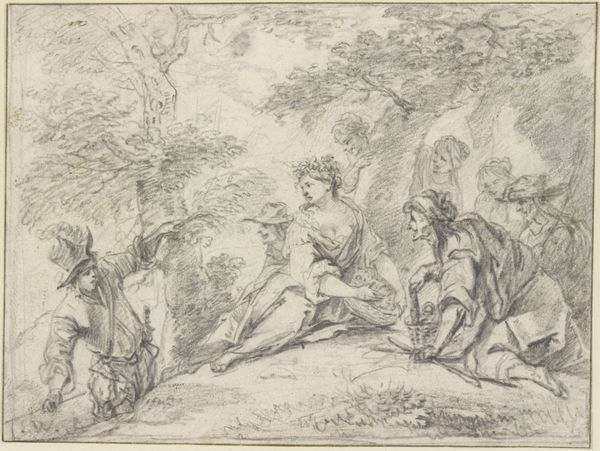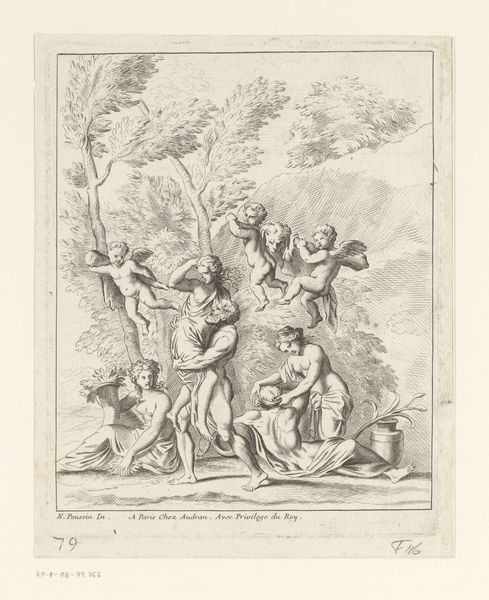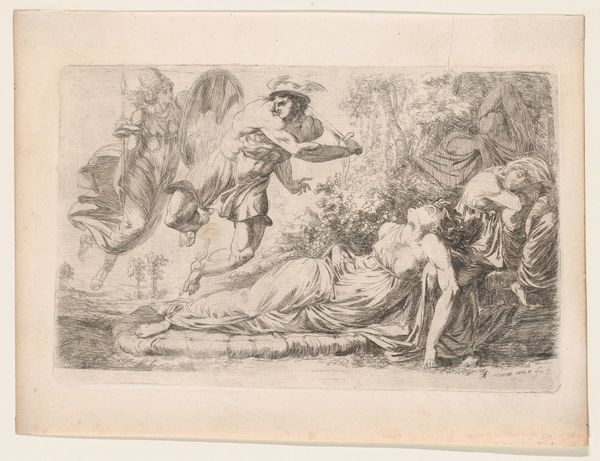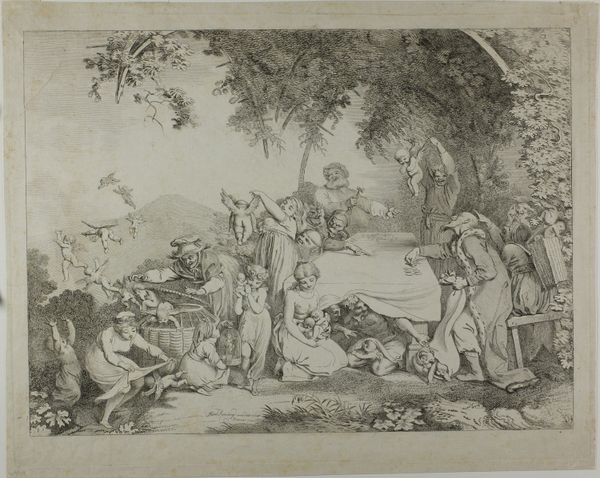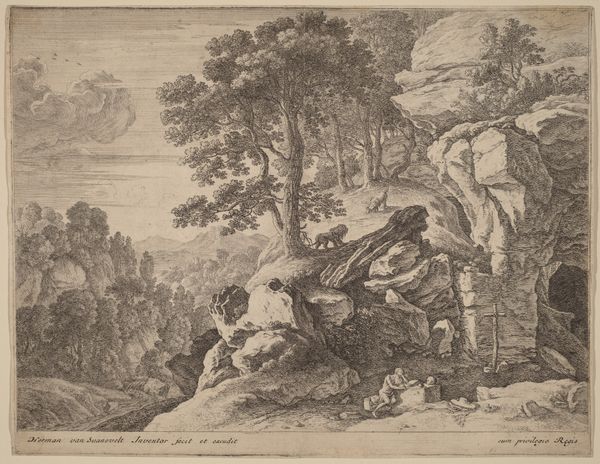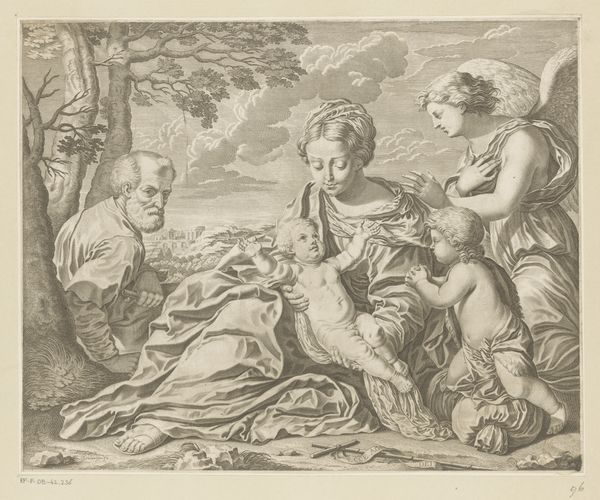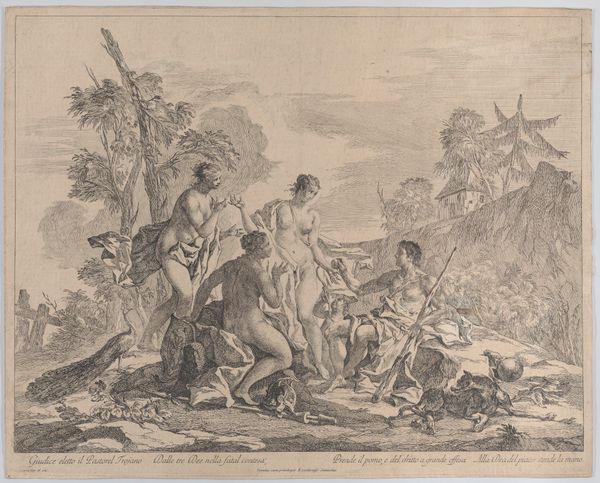
Holy Family with Christ Child Stepping on Serpent 1639
0:00
0:00
print, pen, engraving
#
portrait
#
baroque
# print
#
figuration
#
cross
#
pen
#
history-painting
#
engraving
#
christ
Dimensions: sheet: 12 1/16 x 16 3/8 in. (30.6 x 41.6 cm)
Copyright: Public Domain
Editor: Here we have Laurent de La Hyre’s “Holy Family with Christ Child Stepping on Serpent,” created in 1639. It's an engraving, quite detailed, and immediately striking in its allegorical imagery. The cherubs with the cross are especially intriguing. What's your interpretation? Curator: This work interests me from a materialist perspective. As a print, it’s inherently reproducible, made to disseminate a very specific message of power. Think about the economics of printmaking in 17th century France; who had access to these images? To what extent does the *making* of this work impact its meaning? The means of production speak to control and dissemination of ideology, no? Editor: So you are thinking about the relationship between access and religious messaging? Curator: Precisely. Engravings allowed for wider, if still limited, access compared to unique paintings. The materials, the ink, the paper, the printing press—these are the unsung collaborators in La Hyre's work. The social context of its consumption—where it was displayed, who viewed it, what was their class? That shapes its function and power. Who benefited economically from its sale, and to what end? Editor: The figures certainly appear to be promoting an intended message. I am just thinking about those cherubs working to hold up the cross. Curator: Indeed, the child Christ stepping on the serpent isn't just a religious symbol; it represents a very concrete struggle, the victory of a specific religious doctrine enforced by the social and economic systems of the time. The print’s availability impacts that symbolic 'stepping'. Do you agree? Editor: It’s interesting to consider art this way – seeing the layers of meaning embedded not just in the image itself but also in how that image was made and consumed. Curator: Exactly. Understanding the means and materials of production, in its historic environment, transforms our reading of the image. Seeing it within the system makes us ask the difficult questions, I think.
Comments
No comments
Be the first to comment and join the conversation on the ultimate creative platform.
